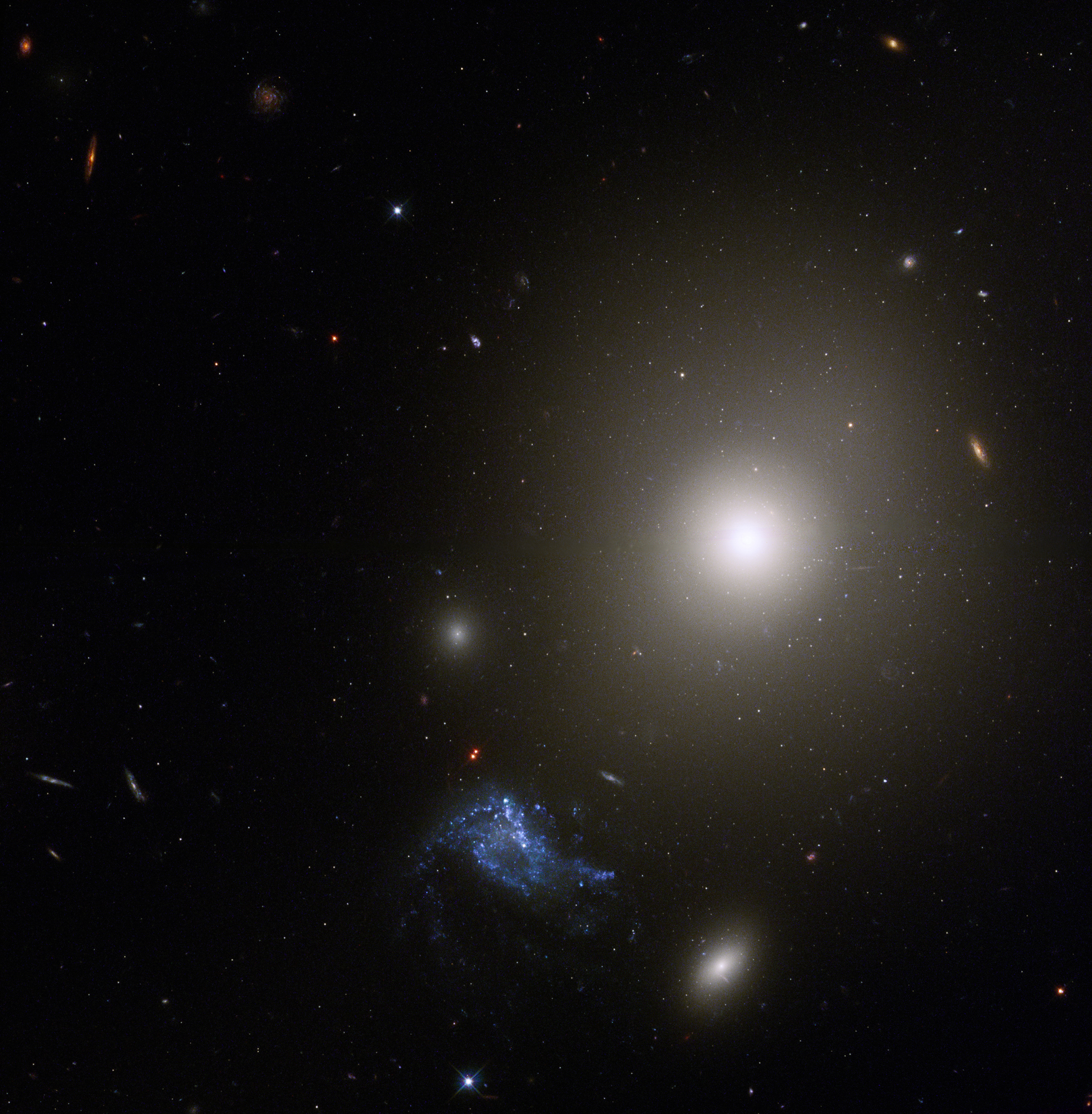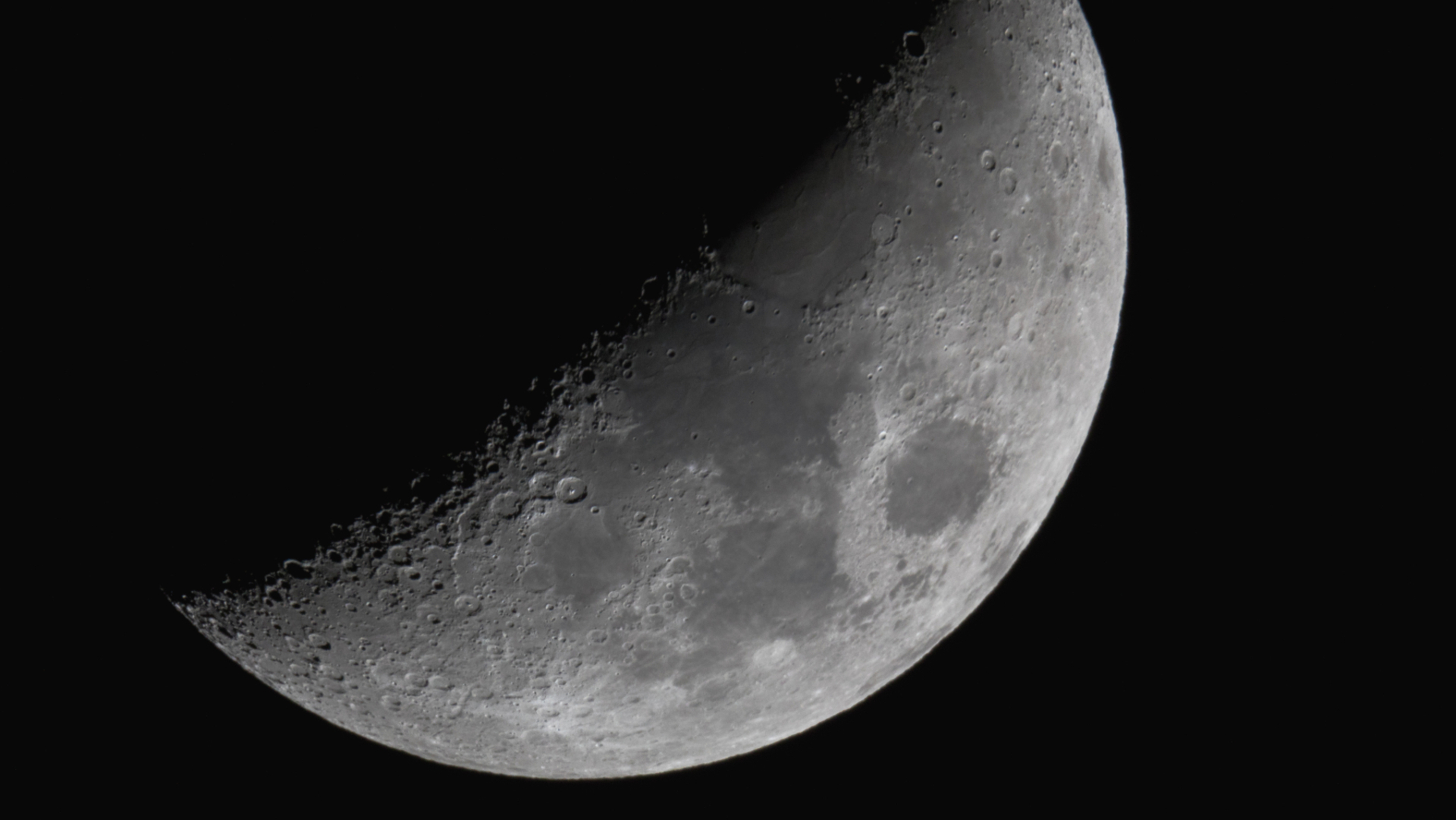Hubble telescope spots peculiar dwarf galaxy with really bright neighbor
The Hubble Space Telescope has captured a dazzling new view of a busy star birth factory.
The oddly shaped Minkowski's Object, a dwarf galaxy, glows in blue toward the bottom left of the image, while the elliptical galaxy NGC 541 shines brightly in the upper right. Minkowski's Object is bursting with stars, containing at least 20 million stellar objects, and it has been greatly influenced by its larger neighbor, NASA officials wrote in a statement when releasing the new Hubble Space Telescope image on May 23.
The dwarf galaxy is named after German-American astronomer Rudolph Minkowski, whose multidisciplinary work included examining galaxy evolution and defining two types of supernovas, or star explosions.
Related: The best Hubble Space Telescope images of all time!
"The radio jet from NGC 541 likely caused the star formation in Minkowski's Object," NASA officials said in the statement. This jet pushes against gas surrounding the galaxy, compressing the gas until the molecules become energized, or ionized.
"As the ionized gas reverts from its higher-energy state to a lower-energy state, energy leaves the cloud in the form of radiation," NASA added. "As the clouds cool, they collapse, giving rise to star birth."
NGC 541 is an elliptical galaxy that was likely created from a merger of two other galaxies, the agency said. The galaxy's radio jets were picked up by telescopes, showing that the streams emerge from an accretion disk surrounding a black hole in the center of the galaxy.
Breaking space news, the latest updates on rocket launches, skywatching events and more!
The radio activity was likely triggered by debris from nearby mergers, NASA said. All in all, the busy area was one reason Hubble was tasked with looking at the region to better understand the conditions under which star formation is triggered.
Both Hubble and a successor telescope, the James Webb Space Telescope, are engaged in better understanding how galaxies and stars form. Webb's larger mirror and deep-space location will allow it to look at some of the universe's first galaxies, once Webb finishes commissioning this summer.
Webb's research on galaxies will look at topics such as mergers, collisions, supermassive black holes and galactic types, according to NASA.
Follow Elizabeth Howell on Twitter @howellspace. Follow us on Twitter @Spacedotcom or Facebook.

Elizabeth Howell (she/her), Ph.D., was a staff writer in the spaceflight channel between 2022 and 2024 specializing in Canadian space news. She was contributing writer for Space.com for 10 years from 2012 to 2024. Elizabeth's reporting includes multiple exclusives with the White House, leading world coverage about a lost-and-found space tomato on the International Space Station, witnessing five human spaceflight launches on two continents, flying parabolic, working inside a spacesuit, and participating in a simulated Mars mission. Her latest book, "Why Am I Taller?" (ECW Press, 2022) is co-written with astronaut Dave Williams.

